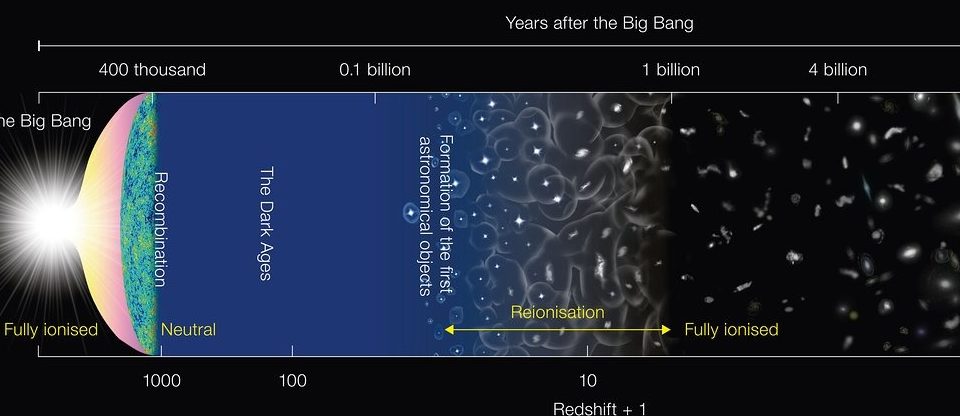The original blog was published at The Great Transition Initiative on May 23, 2023
I have had the great pleasure of knowing David Christian personally for over a decade now and was already familiar with the “scenario of cosmic evolution” which physical scientists had developed through much of the twentieth century. It has been my framing worldview since my late teenage as a physics student, and I had used it implicitly in my later work (both teaching and research)—after I made the switch to Futures Studies twenty-five years ago—at around the same time as we started using the Great Transition scenarios in our Master of Strategic Foresight program at Swinburne University of Technology to profile the outlook for the twenty-first century. I came across the term “Big History” in 2006 when researching a paper that examined perspectives beyond the somewhat limited view of our own single small planet. For me, Big History and the Great Transition both take a suitably “macro” perspective on contextualizing this moment in our planet’s and species’ lifetime and together represent the fascinating marriage of a purposefully descriptive view of the past with a consciously normative image of the future.
Big History (BH) is our particular instance of the more general scenario of cosmic evolution as it played out here on Planet Earth. It of necessity places a much stronger emphasis on Humanity than is conventionally the case in the physical sciences. But, of course, it is the same continuum, which is why discussions with BH colleagues from those and other disciplines were not only possible—which is already remarkable—but also very fruitful, informed as they were by a shared understanding of the overall “through-line” that connects the Big Bang to our present-day planetary civilization (and, indeed, beyond, for every BH scholar I have known so far has unfailingly looked to the future as well). With Christian’s support, along with his textbook co-authors Craig Benjamin and the late Cynthia Stokes Brown, I introduced BH to my university in 2015—both as part of an undergraduate curriculum in Futures Studies and for examining the coming Energy Transition in the Master’s, where it was used to frame thinking about the global energy future and what we might do about it [1]. The undergraduate course ran for five or six iterations before the COVID-19 pandemic led to the exit of thousands of university staff from the Australian tertiary sector. The Master’s, too, also went extinct.
As noted, Christian co-wrote the first purpose-written textbook on BH [2]. But at Stokes Brown’s own university, Dominican, BH was not just a single course or two tied to one or a few academics (which it has mostly tended to be), it was being implemented as the world’s first university-wide experiment in using BH as a framework for undergraduate teaching. The teams of academics who participated in this “First-Year Experience – Big History” initiative came from pretty much every discipline one finds at liberal arts universities. At first, many of them had no idea what BH was. Yet, despite this initial lack of subject-matter expertise, and some not-so-mild trepidation at the enormity of its scope, they resolved to learn about it together. First, to explore and internalize the essence of BH itself, and then how to teach it to others—not merely as an assemblage of subject-matter experts cooperating across their compartmentalized academic specialties, but rather as a community of co-learners and teachers learning and teaching with each other, both with and for their students. One might imagine that such an approach to education could engender a different dynamic than the one usually found in conventional university classes.
The first book on how to teach BH came from these early pioneers [3]. A quote from it reveals why the BH framework is so powerful:
Because the Big History framework illuminates the structures that underlie the universe, it is a powerful analytic tool. Because its structure binds together content from all human disciplines, it is a powerful pedagogical tool. Finally, because the structure of the Big History narrative parallels the structures of the physical universe, even as it tells the story of those structures, Big History is at once narrative and meta-narrative. All this makes Big History an intuitive vehicle for critical thinking, and for rich, innovative intellectual exploration within students’ and teachers’ home disciplines, as well as within Big History itself. Perhaps most importantly, a Big History understanding, in reframing all of human knowledge in a way that makes intuitive, logical sense, prepares us to consider possible futures, premised on the patterns we see in the past and empowers us intellectually to act to shape the future [4].
And, as they later note:
Four years later, our assessment shows that it’s working. Our students report that they understand the world differently. They perceive the connections among their various courses and the larger context in which their studies in their majors make sense. They are bringing their Big History understanding into their other classes—so that discussions and academic work throughout the university are informed by this larger context. And they are attuned to the future and to their own agency in shaping it [5].
I would suggest that these holistic- and systemic-thinking skills are precisely what is needed, at the very least, for humanity to “bend the curve” away from the Reference scenario leading to global overshoot-and-collapse foreseen so clearly by the Limits to Growth fifty years ago, towards the Great Transition that is the objective of this community [6]. And, that they are being instilled into the young hearts, minds, and hands who are inheriting our so-far mismanaged planet allows, perhaps, for some small measure of rational hope.
My own direct experience of teaching BH is completely resonant with these observations. As a futures educator who taught BH, a quite unexpected discovery was that one of the best ways to help students find a sense of their place in the present—and especially to feel agency towards their future—is to show them the whole of the past, even if only in a roughly sketched “through-line” form.
The BH through-line interconnects all human knowledge disciplines in the order of the emergence of their subject matter, over the 13.8 billion-year rise of complexity over cosmic time. It provides an orienting supportive “backbone” from which deeper explorations into these disciplines are possible. These could run the gamut from the esoterics of particle physics to the specifics of amino acid biochemistry, to the politics of consensual power from below transitioning to coercive power from above, to the homeostatics-writ-large of the biosphere of our planet. It is all there and all ready to be explored, as and when one is so moved. That these may not be immediately visible is not due to their absence but to the necessary choice of scale. An orienting map must leave out some of the finer details because its job is not to show all of that detail; rather, it is to show the knowledge explorer where to go looking for and to find that detail. But also, and even more importantly, to show how these many details interconnect.
So, while it is possible to discuss and debate the many ways that BH might be modified towards being a more perfect framework for meeting the existential challenge of the Great Transition, it is already perfectly sufficient right now for the work that is so urgently needed—reorienting the hearts, minds, and hands of humanity towards having a future at all, even if that is not a completely perfect one. Let not the chimera of theoretical perfection delay the necessity of practicable action. Our species and our planet just don’t have the luxury of time anymore.
References
1. Joseph Voros, “Big History as a Scaffold for Futures Education,” World Futures Review 10, no. 4 (2018): 263–278; Joseph Voros, “Big History and Anticipation: Using Big History as a Framework for Global Foresight,” in Handbook of Anticipation: Theoretical and Applied Aspects of the Use of Future in Decision Making, ed. Roberto Poli, 426–464 (New York: Springer International, 2017). For a broader discussion of Big History, see also: Joseph Voros, “Big History in Its Cosmic Context,” Journal of Big History 3, no. 3 (2019): 57–80.
2. David Christian, Cynthia Stokes Brown, and Craig Benjamin, Big History: Between Nothing and Everything (Boston: McGraw-Hill Education, 2013).
3. Richard B. Simon, Mojgan Behmand, and Thomas Burke, eds., Teaching Big History (Berkeley: University of California Press, 2014).
4. Ibid., 12.
5. Ibid., 344.
6. Paul Raskin, Gilberto Gallopín, Pablo Gutman, Al Hammond, and Rob Swart, Bending the Curve: Towards Global Sustainability, PoleStar Series no. 8 (Boston: Stockholm Environment Institute, 1998), https://greattransition.org/archives/other/Bending%20the%20Curve.pdf; Paul Raskin, Tariq Banuri, Gilberto Gallopín, Pablo Gutman, Al Hammond, Robert Kates, and Rob Swart, Great Transition: The Promise and Lure of the Times Ahead, PoleStar Series no. 10 (Boston: Tellus Institute, 2002), https://greattransition.org/gt-essay.
 Joseph Voros has been a professional futurist for more than two decades and is a member of the World Futures Studies Federation, the Association of Professional Futurists, and the International Big History Association.
Joseph Voros has been a professional futurist for more than two decades and is a member of the World Futures Studies Federation, the Association of Professional Futurists, and the International Big History Association.
The MAHB Blog is a venture of the Millennium Alliance for Humanity and the Biosphere. Questions should be directed to joan@mahbonline.org
The views and opinions expressed through the MAHB Website are those of the contributing authors and do not necessarily reflect an official position of the MAHB. The MAHB aims to share a range of perspectives and welcomes the discussions that they prompt.
